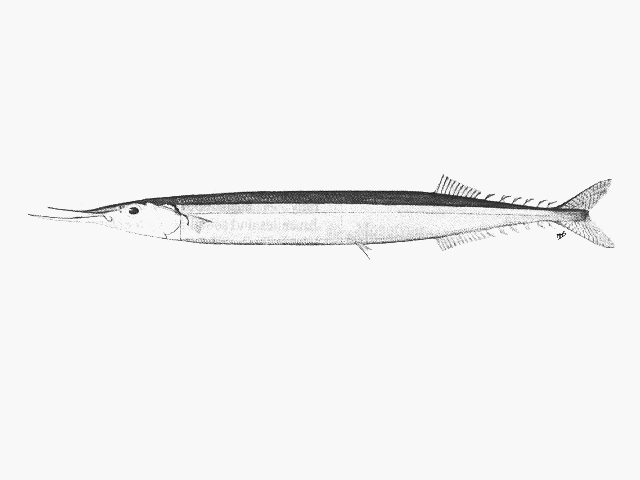| Scomberesocidae (Sauries) |
| 50 cm SL (male/unsexed) |
|
pelagic-oceanic; brackish; marine; depth range - 0 m, oceanodromous |
| Atlantic, Indian and Pacific: generally circumglobal in temperate waters of the southern hemisphere. More common between 30°-40°S, but more northerly to 15°S near Africa and to near equator off Ecuador along South American west coast (particularly the young and juveniles). Highly migratory species. |
|
Dorsal spines (total): 0-0; Dorsal soft rays (total): 10-12; Anal spines: 0-0; Anal soft rays: 12-14; Vertebrae: 64-68. Presence of toothless bill-like jaws, and finlets posterior to the dorsal and anal fins. |
| An epipelagic, gregarious species. Occurs in surface waters of the open sea; occasionally enters bays and inlets (Ref. 9563). Flesh is highly esteemed (Ref. 6617) but large schools are too sporadic to be of commercial importance (Ref. 6531). Feeds on small planktonic organisms, preyed upon by yellowfin tuna, Cape gunnets, marine mammals. Migrates from spawning areas to cool temperate and plankton-rich waters (Ref. 36731). |
|
Not Evaluated (N.E.) Ref. (130435)
|
| harmless |
Source and more info: www.fishbase.org. For personal, classroom, and other internal use only. Not for publication.
